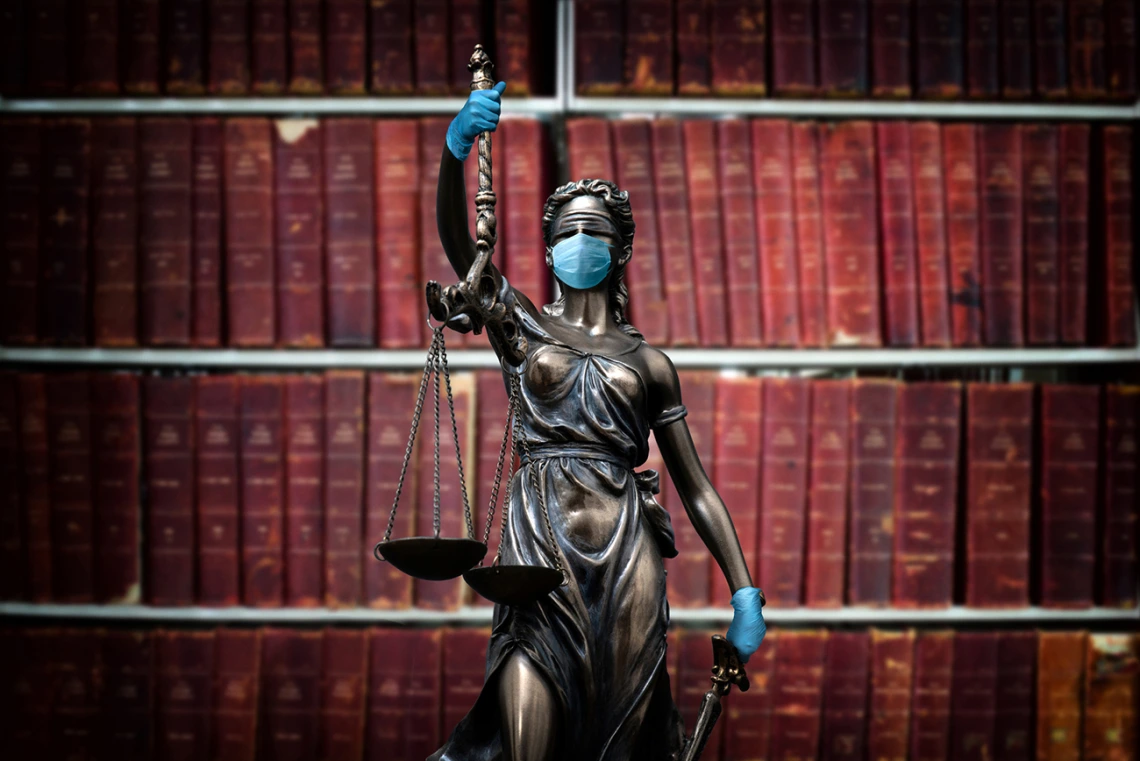Balancing Individual Rights, Public Health During a Pandemic

Balancing public health with individual rights can be difficult during a global pandemic, when efforts to stop the spread of disease may infringe upon personal freedoms.
Over the last several months, the human response to the COVID-19 pandemic has become a real-time case study for scientists and students in many fields, particularly public health.
Stay-at-home, quarantine and isolation orders have highlighted the often-disparate goals of protecting public health and upholding individual rights. Giving proper consideration to both is a balancing act that continues to play out across the U.S. as lawmakers make decisions on when and how quickly businesses can reopen and public social gatherings can resume.
At the University of Arizona Health Sciences, assistant professor Leila Barraza teaches public health law and ethics in the Mel and Enid Zuckerman College of Public Health. Some of her students are pursuing law degrees in the James E. Rogers College of Law; others are working toward master's or doctoral degrees in public health.
"We focus heavily on emergency legal preparedness, including isolation and quarantine," said Barraza, who teaches students the difference between quarantine, which is used to separate individuals who have been exposed to a disease, and isolation, which is for individuals who are showing symptoms of a disease. "We also focus on the source and scope of public health powers for local, state, federal and tribal governments."
Navajo Nation During COVID-19
Students have seen those lessons come to life during the current pandemic, which has resulted in federal, state, local and tribal governments all acting within their legal levels of authority. Federal actions were taken to restrict international travel; state actions were taken to shutter businesses; and in places such as California, local actions determined whether or not it was mandatory to wear a mask in public.
"The Navajo Nation declared an emergency on their tribal land and also instituted a curfew," said Barraza, who is an assistant professor in the Department of Community, Environment and Policy.
The Navajo Nation, which spans parts of Arizona, New Mexico and Utah, implemented one of the strictest stay-at-home orders in the country, including daily and 57-hour weekend curfews. Alternative care and isolation sites were opened to help slow the spread of the virus on the Navajo Nation, which recorded the highest per-capita COVID-19 infection rate in the U.S. in late May.
The alternative care sites, which are for patients with mild cases of COVID-19 or those who are progressing well in their recovery, allow local hospitals to focus on critically ill patients. Isolation sites are provided for patients who do not have stable housing or are unable to self-isolate at home.
Arizona's Policies During Emergencies
Barraza said state and sometimes local governments have the authority to enforce quarantine and isolation orders. Recently in Milwaukee, Wisconsin, police issued quarantine orders for two people who tested positive for COVID-19 but refused to self-isolate.
"In Arizona, we have a specific isolation and quarantine statute pursuant to a public health emergency declaration. Even though the stay-at-home order expired, the emergency declaration is still active," Barraza said. "Governors have broad authority under emergency declarations, so an emergency declaration can change the legal landscape in a response. If somebody is sick, we hope they volunteer to isolate without having to order them to do so, but, in Arizona, the state health department or local health departments can utilize a written directive if there's a substantial threat to the public health during a declared emergency. After the written directive, then a court-ordered petition must be filed."
Barraza added that the same laws that allow governments to isolate and quarantine people also provide protections for the individual, such as ensuring that isolation and quarantine always be by the least restrictive means necessary.
Analyzing Case Studies
Additionally, prior lawsuits, such as the Jew Ho v. Williamson case, have set public health law precedents regarding equal protection for everyone, including vulnerable populations. As the bubonic plague spread across San Francisco in 1900, the court struck down a quarantine order that targeted a Chinese district, finding the order to be "unreasonable, unjust and oppressive."
Jew Ho is one of the seminal cases Barraza discusses with the law and public health students in her course. Another is Jacobson v. Massachusetts, a 1905 U.S. Supreme Court case that recognized states' authority to enforce compulsory vaccination. Despite their age, the cases are still referenced in courtrooms today when matters of public health law arise, including in recent cases arising from government responses to the pandemic.
"We discussed approaches to the pandemic quite a bit," Barraza said, referring to her recently concluded spring semester course. "I always run a ventilator-allocation exercise for the students to help them examine public health ethical issues. This year I ran the same exercise, but we discussed how it related to COVID-19. We also reviewed and discussed orders that governors had issued related to COVID-19, especially such orders in Arizona."
Barraza and Elizabeth Hall-Lipsy, in the College of Pharmacy, are developing a health law and policy course to complement the existing public health law and ethics course. The curriculum is likely to be robust with examples from current events, as the pandemic continues and government officials carefully balance their decisions between individual rights and public health.
A version of this article originally appeared on the Health Sciences Connect website: https://healthsciences.arizona.edu/connect/features/balancing-individual-rights-public-health-during-pandemic











